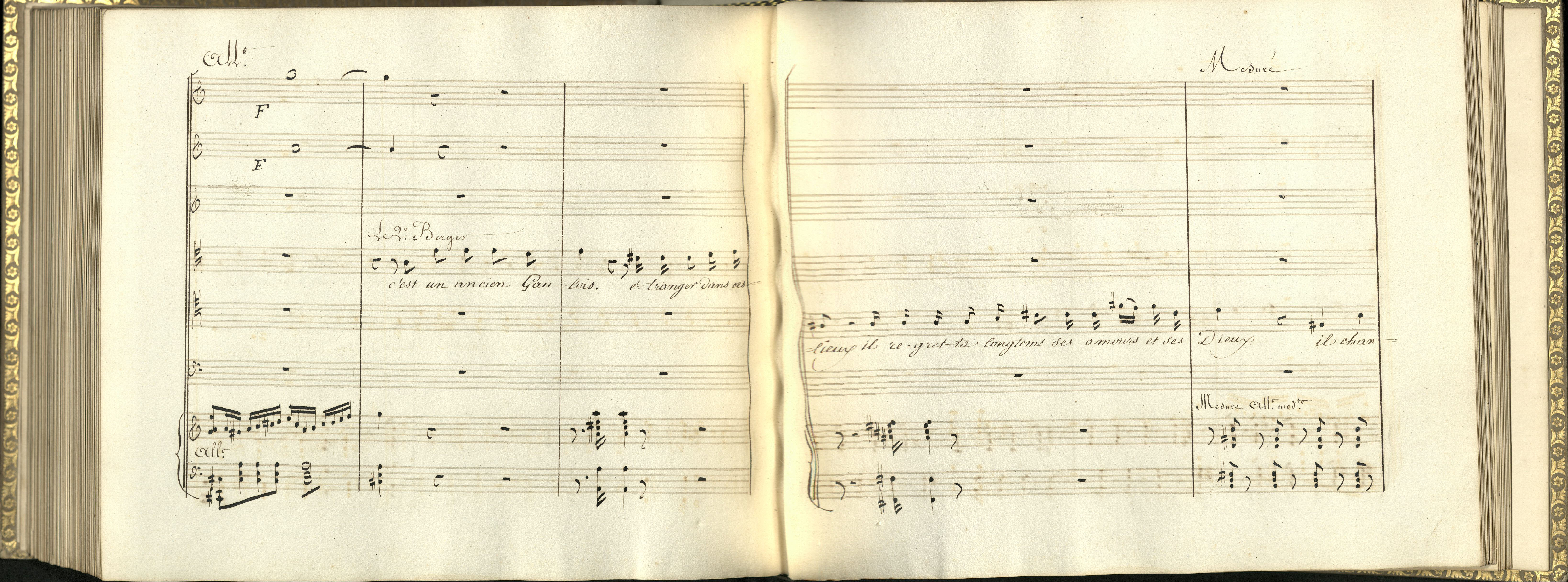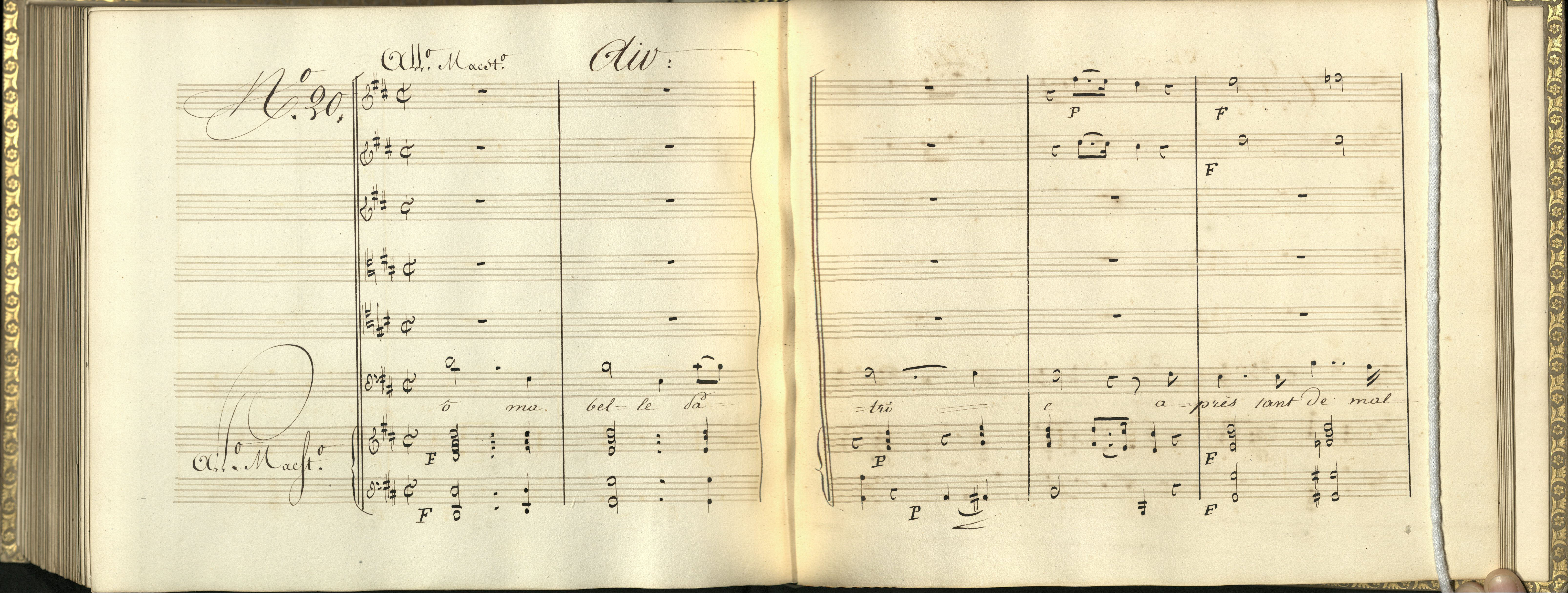Women and music-making during the Bourbon Restoration
Emerson Morgan
Thursday, June 30, 2016

Emerson Morgan from the RISM US working group at Harvard University has written this article about a score newly cataloged for RISM, La naissance du sauveur (RISM ID no. 900022067).
This manuscript of a unique Christmas cantata, authored by a woman composer and dedicated to a woman patron, offers a view of private music-making during the Bourbon Restoration of the 1820s.
Marie-Caroline de Bourbon-Sicile, Duchess of Berry (1798–1870), to whom this cantata was dedicated, was the patron of several royal theatres of Paris, including the Gymnase dramatique, which was renamed the Théâtre de Son Altesse royale, Madame, duchesse de Berry, or Théâtre de Madame, from 1824 to 1830 in recognition of her support (see note 1). The Duchess also sponsored private concerts: a receipt recently has come to light showing that Marie-Caroline paid FR 200 to support a concert given for her by the twelve-year-old Hungarian prodigy, Franz Liszt, who had been introduced to the Duchess by his composition instructor, Ferdinando Paer (see note 2).
The engraved title page of the manuscript bears two handwritten lines which raise tantalizing questions about the connection of the composer to the circle of its dedicatee. Her identity is only partially revealed by these inscriptions: “Paroles et Musique par Made la Ctesse 8e [?] | de Chanaleilles de Lasaumès Née Gerbier”. The most likely author is Madeleine Gerbier de Franville, whose biography is scarce, save for her genealogy: daughter of the attorney in French parliament, Pierre-Jean-Baptiste Gerbier (1725–1788), and spouse of Jean-Louis de Chanaleilles (1743–1822), count of La Saumès (see note 3). These details, however lean, make a compelling match to the author inscription, since the marriage of Madeleine in 1780 represents the moment at which the Gerbier family united with the houses of Chanaleilles and Lasaumès of Auvergne.
The cantata is written for four soloists and an instrumental ensemble of flute, oboe, and keyboard; the opening scoring calls for pianoforte, but the marking “jeu céleste” (no. 6) suggests adaptation for organ. The work is divided into two parts of twenty-one numbers; the soloists in the first part (nos. 1–11) sing as the dramatic personages of angels, and in the second (nos. 12–21) as the shepherds who heed their call. The landscape of the Christmas drama is transformed by the introduction (no. 17) of the figure of a “viellard … ancien Gaulois, étranger dans ces lieux” and invocation of the native “bois mystérieux du Gaulois révérés”.

All.|o | Le 2|e Berger | c’est un ancient Gaulois. étranger dans ces lieux il regretta longtemps ses amours et ses Dieux
It is possible to detect encoded references to the dedicatee in devotional Marian imagery: the shepherds’ sign “comme l’étoile du matin vient proteger” (no. 10), which harkens to the allusive play on the name of Mary in the medieval hymn, Ave Maris Stella, and the parallelism “ô ma patrie … une autre marie” (no. 20).

N.|o 10 Hymne Trio | Andante | Le Séraphin | Le 2.|e Ange | Le 1.|er Ange | a la vierge marie offrons un | hymn glorieux

N.o 20 | All.|o Maest.|o | Air | ô ma belle patrie après tant de mal | heurs
Notes
Note 1: Mark Everist, Music Drama at the Paris Odéon, 1824–1828 (Berkeley: University of California Press, 2002), p. 153 n29, 168.
Note 2: Klára Hamburger, “Unbekannte Liszt-Dokumente aus deutschen Bibliotheken,” Studia musicologica: An International Journal of Musicology of the Hungarian Academy of Sciences, 53/4 (2012): 444.
Note 3: Généalogie historique de la maison de Chanaleilles,… ([Paris:] Impr. de Bonaventure et Ducessois, 1856), p. 25. Via Gallica.
Image, top: TITLE PAGE “LA | Naissance | DU SAUVEUR. | CANTATE | à quatre voix avec des chœurs, | offerte à S. A. R. | M|e LA DUCHESSE DE Berry. | Paroles et Musique par Mad|e la C|t|e|s|s|e 8|e | de Chanaleilles de Lasaumès Née Gerbier”
Share Tweet EmailCatégorie: Collections de bibliothèques

